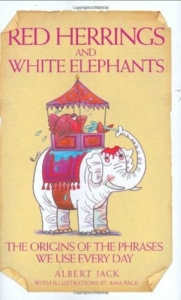Easy Martha Stewart-Inspired Updates for Blog Content
“To invigorate the look of old china on your table,” Martha Stewart advises on the “Easy Updates” page of her latest Living magazine issue, “identify common shapes and details to weave through the new elements.” Stewart suggests three specific updating techniques:
- Add new patterns.
- Play up one color.
- Mix mod materials.
Along with antique tableware, blog content can benefit from updating, as we teach at Say It For You, and each of Martha’s tips can serve as a guide for giving a bygone blog post a freshening-up. After all, as Richard Harding Davis so aptly remarked, “The secret of good writing is to say an old thing in a new way, or an old thing in an old way.”
Add New Patterns
“Stick to the colors of your old china to keep the table cohesive, but mix in a serving piece with another motif that compliments it.” In composing blog content, it’s a good idea to repeat themes already covered in former posts, but the trick is to change the pattern by a) adding new information and b) using a different format – listicle, Q&A, comparison, etc.
Play Up One Color
“Choose a shade from your pattern that you want to highlight, and let it fly in accent pieces like linens or glasses.” In a blog post or series, link new information to themes you’ve emphasized in former posts, “coloring” new concepts or information by referring to concepts you’ve introduced months or even years ago. As Martha Stewart suggests, the old and new are unified through “color”.
Mix Mod Materials
“Elevate older porcelain with glass, wood, metal, or ceramic items that add texture and dimension to your table,” Finding word combinations that resonate with blog readers is a big part of the challenge involved in blog content writing. Since there is a definite generational factor involved in language, knowing your target audience is key. In different posts, therefore, you can alternate a friendly, even humorous tone with a professional, authoritative one.
In table settings or in blog content writing, invigorate the look of the old “china” with new patterns and colors.






Follow us online!